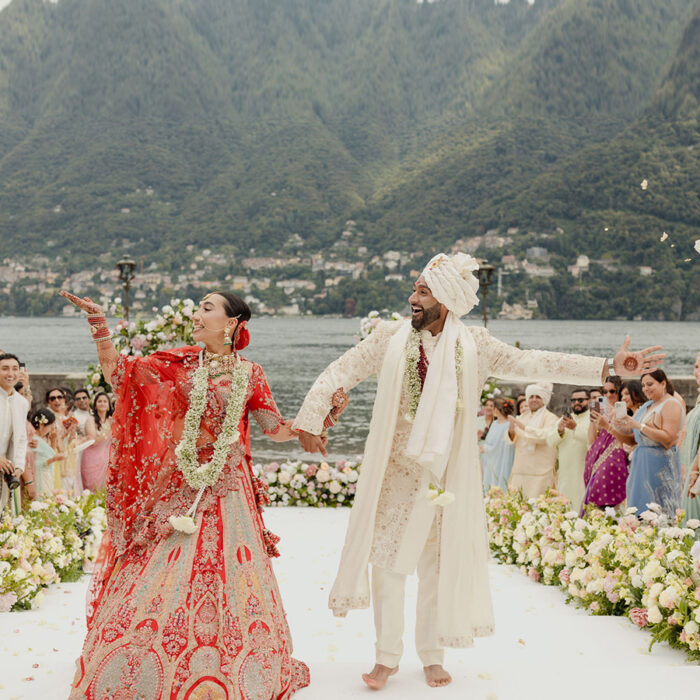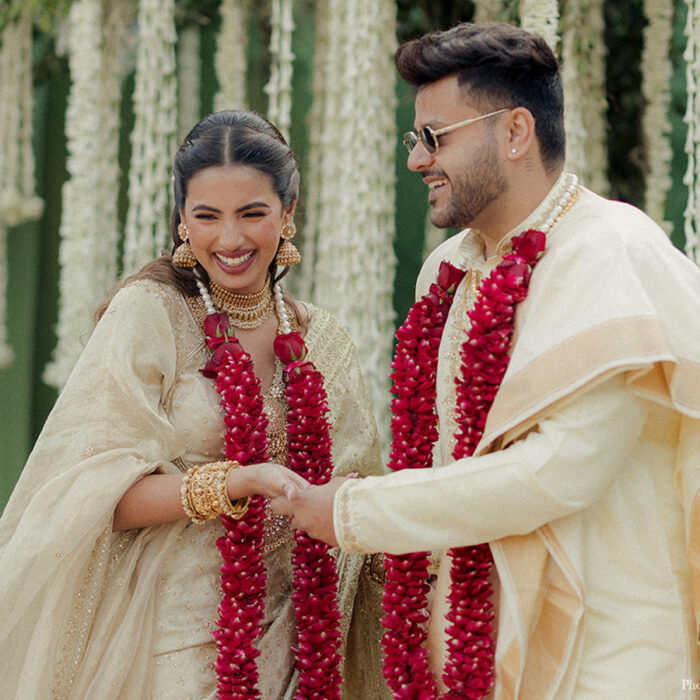Banarasi Sarees 101: All you need to know about this classic weave
There's nothing like the classic Banarasi Saree as an integral part of your trousseau to channel your inner queen.
Originally crafted exclusively for royalty, Banarasi sarees have a rich history hidden within its silken weaves. In the olden days, these sarees were crafted from real gold and silver threads and took almost a year to make. However, nowadays, thanks to highly skilled artisans with nimble hands and the soaring demand for the weave, Banarasi sarees are more accessible and remain a desirable addition to every bride’s wardrobe, akin to owning a piece of luxurious history.

It is often confused with the Kanjivaram, another variety of India’s finest silk sarees. The only way to differentiate between a Kanjivaram saree and a Banarasi silk saree is by taking a closer look at the designs woven into the six yards. While Kanjivaram sarees feature temple borders, checks, stripes, coins, and floral motifs originating from Tamil Nadu, the Banarasi saree, with roots in Varanasi, typically has Mughal-inspired motifs.
Amrit Shah,, Creative Director of Shanti Banaras, is renowned for being one of the pioneers and experts of this remarkable weaving prowess. He says, “The Kanjeevaram saree originates from the famous Kanchipuram temple, from where it derives its name. It is considered an auspicious saree, that was traditionally woven from gold zari and is highly regarded at South Indian weddings. The origin of Banarasi silk sarees can be traced to the year 1603 when weavers in Gujarat migrated to Banaras during Emperor Akbar’s reign, whose love for fine silks and fabrics led to the birth of the Banarasi silk saree with its classic motifs, that is still revered for its quality. Since then, this saree has become a proud symbol for the North Indian bride.”
Sagrika Rai, Founder and Creative Director of Warp ‘n Weft, shares her take on the handwoven masterpiece and explains the intricate process that makes a handwoven Banarasi saree a true treasure to behold. She says, “At Warp ‘n Weft, we have continuously strived to protect the interests of the artisans and weaving community-based in Varanasi, and we also endorse the ‘handloom’ that is purely hand-woven, right from spinning, dyeing and graphing, to the final weaving process. We take great care to hinge the production of the textiles on our ethics, sustainability, and social responsibility.”
The relationship between an Indian bride and a Banarasi saree has always been a close one. Its opulence, intricate designs and the fact that it denotes class has made it one of the first sartorial options for a bride who wants to dazzle in a traditional way on her big day.
Coming in distinct varieties like kora (organza) with zari and silk, georgette/chiffon and tissue, there’s plenty that one can choose from. However, amongst all of these, the pure silk variety remains the most coveted one, even as fabrics like cotton, tussar and linen are also becoming popular. Even though a Banarasi silk saree has always been an important part of an Indian bride’s trousseau, it had somehow lost its sheen with modern and Western-inspired creations taking over the market.
However, given how Bollywood heavyweights like Rekha, Deepika Padukone, Aishwarya Rai, Vidya Balan, and Madhuri Dixit have flaunted the classic weave recently, it’s little wonder that Banarasi silk sarees are trending once again.
Designers and brands like Sabyasachi Mukherjee and Raw Mango have also played a pivotal role in making the Banarasi masterpiece popular again. Raw Mango, especially, offers plenty of variety for modern Indian women who want to build a Banarsi silk saree collection.
In Varanasi, the real deal can be undoubtedly found in stores like Nilambari Sarees, JDS Exclusive, Mehta International Silk-Weaving Centre, HM Textiles, and Haji Munna Creations that stock the best sarees.
Best buying tips to ensure your Banarasi saree is authentic
· Pure Banarasi sarees are made from high quality silk and real gold and silver zari, and tend to be costly. Stay away from cheap options that seem too good to be true.
· Check the reverse side for floats between the grids of warps and wefts, which only a hand woven saree will have. Machine woven saree do not have these.
· Look for a patch of plain silk, about 6 to 8 inches long, on the pallu.
· Real Banarasi sarees will carry Mughal motifs like amru, ambi and Domak, as well as fine floral and foliage motifs like kalga and bel, which fakes do not have.
· Banarasi sarees now have their own GI protection to demarcate original pieces from weavers in Uttar Pradesh against fakes from China, Surat or others.
· While buying pure silk sarees, always insist on a certificate from Silk Mark Organisation of India.
So if you’re looking to hop onto the Banarasi saree bandwagon or are just on the lookout for some inspiration, here are a few handpicked creations that you should check out:
Be a vision in vermillion with this modern take on the Banarasi saree.
 Shop Here
Shop Here
Make a statement with this handwoven saree.
 Shop Here
Shop Here
Fulfill your floral fantasies with this intricate saree.
 Shop Here
Shop Here
Go light with this sophisticated cotton saree.
 Shop Here
Shop Here
Be the showstopper in this stunning yet simple saree.
 Shop Here
Shop Here
Channel your inner goddess in this ornate pure silk saree.
 Shop Here
Shop Here
Take opulence to a new high with this real zari saree with konia.
 Shop Here
Shop Here
Stay elegant in this kadhwa booti bridal saree.
 Shop Here
Shop Here
Express your contemporary style the traditional way with this saree.
 Shop Here
Shop Here
For more bridal outfit inspirations click here.






